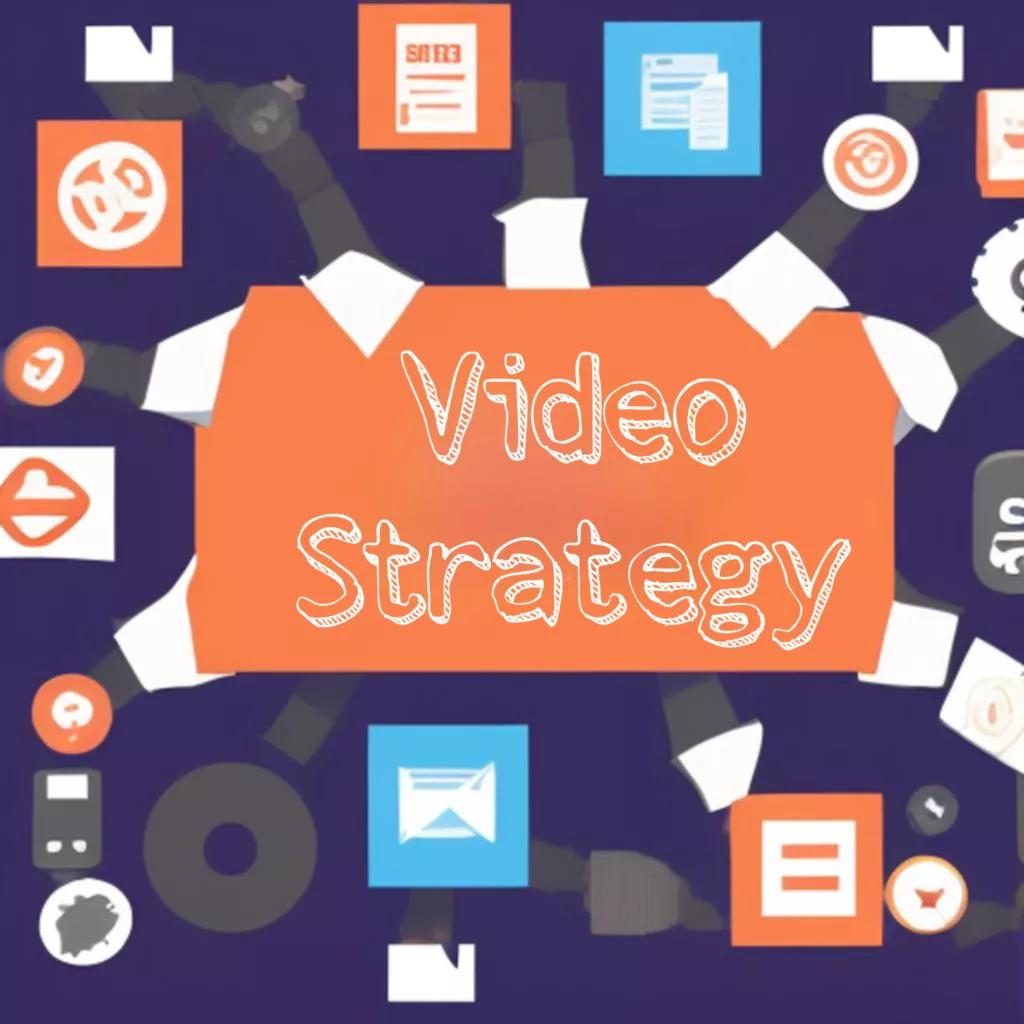Table of Contents
What are the best steps for a video strategy
Developing a video strategy is crucial for achieving your goals and maximizing the impact of your videos. Here are the steps to create an effective video strategy:
Define Your Objectives
Clearly outline your goals and objectives for using video. Are you looking to increase brand awareness, drive website traffic, generate leads, or educate your audience? Identifying your objectives will help shape your video strategy.
Know Your Target Audience
Understand your target audience’s demographics, interests, preferences, and pain points. This knowledge will help you tailor your video content to resonate with your audience and address their needs.
Choose the Right Video Types
Determine the types of videos that align with your goals and resonate with your target audience. This could include educational tutorials, product demonstrations, customer testimonials, behind-the-scenes footage, or thought leadership interviews. Select video formats that effectively communicate your message.
Content Planning and Calendar
Create a content plan and calendar for your videos. Determine the topics, themes, and formats for each video and establish a consistent publishing schedule. This ensures that you have a steady flow of content and helps you stay organized.
Optimize for Different Platforms
Consider the platforms where you’ll share your videos, such as YouTube, Facebook, Instagram, or LinkedIn. Each platform has its own video requirements and audience behavior. Optimize your videos for each platform by adapting the format, length, and style to match the platform’s audience and best practices.
Distribution and Promotion
Develop a distribution strategy to ensure your videos reach your target audience. Utilize your website, blog, social media channels, email newsletters, and paid advertising to promote your videos. Collaborate with influencers or partners who can help amplify your video reach.
Monitor and Measure
Track the performance of your videos using analytics tools provided by the platforms or third-party tools. Monitor metrics such as views, watch time, engagement, shares, and conversion rates. Analyze the data to understand what is working well and make adjustments to optimize your strategy.
Engage with Your Audience
Actively engage with viewers who comment on your videos or share them on social media. Respond to comments, answer questions, and encourage further discussion. Building a relationship with your audience fosters loyalty and encourages ongoing engagement.
Iterate and Improve
Continuously learn from your video strategy and make improvements based on feedback and data. Experiment with different approaches, formats, and topics to find what resonates best with your audience. Use insights gained to refine your strategy and produce more effective videos over time.
Stay Consistent and Authentic
Consistency is key in maintaining an engaged audience. Stick to your publishing schedule and maintain a consistent brand voice and style. Be authentic and genuine in your videos, as viewers respond well to authenticity and relatability.
Storytelling
Incorporate storytelling elements into your videos to create a compelling narrative. Stories have the power to captivate and connect with viewers on an emotional level, making your content more memorable and engaging.
Calls to Action (CTAs)
Include clear and specific calls to action in your videos. Whether it’s asking viewers to subscribe, like, share, visit your website, or take a specific action, CTAs guide your audience towards the desired outcome.
Video Length
Consider the optimal video length for your target audience and platform. While shorter videos tend to have higher engagement rates, longer videos can provide in-depth information and foster deeper connections. Experiment with different lengths to find what works best for your audience and objectives.
Collaboration and Cross-Promotion
Collaborate with other content creators, influencers, or industry experts to create joint videos or cross-promote each other’s content. This allows you to tap into their audience and expand your reach while providing valuable content to your viewers.
Repurpose Content
Extend the lifespan and reach of your videos by repurposing them into different formats. For example, you can extract key points from a longer video and turn them into short social media clips, blog posts, podcasts, or infographics. This helps you cater to different audience preferences and maximize your content’s impact.
Feedback and Adaptation
Pay attention to viewer feedback, comments, and engagement metrics. Adapt your video strategy based on the feedback received. This may involve addressing common questions or concerns, experimenting with different formats or styles, or adjusting your content topics based on audience interests.
Evergreen Content
Create evergreen videos that have lasting relevance and can be enjoyed by viewers over time. Evergreen content stays valuable and can continue to attract views and engagement long after its initial release. Balance evergreen content with timely or trending topics to keep your video strategy fresh and relevant.
Video SEO
Optimize your videos for search engines by using relevant keywords in titles, descriptions, and tags. Conduct keyword research to understand what your audience is searching for and incorporate those terms strategically. This improves the chances of your videos appearing in search results and attracting organic traffic.
A/B Testing
Experiment with different elements of your videos, such as titles, thumbnails, video lengths, or introductions, to identify what resonates best with your audience. Conduct A/B testing to compare performance metrics and refine your video strategy based on the results.
Stay Current and Evolve
Keep up with industry trends, changes in viewer behavior, and emerging video platforms. Stay current with the latest video production techniques, equipment, and editing software. Continuously evolve your video strategy to adapt to the evolving landscape and cater to your audience’s preferences.
Remember, creating a successful video strategy requires experimentation, adaptation, and ongoing learning. Be open to trying new ideas, analyzing results, and refining your approach based on data and audience feedback. Stay consistent, provide value to your viewers, and always strive to improve the quality and effectiveness of your videos.
Summary of the steps to success for video strategy
| Step | Description |
| 1. Define Your Objectives | Clearly outline your goals and objectives for using video, such as increasing brand awareness or driving traffic. |
| 2. Identify Your Target Audience | Understand your target audience’s demographics, interests, and preferences. |
| 3. Choose the Right Video Types | Select video types that align with your goals and resonate with your target audience. |
| 4. Plan Your Content | Develop a content plan and calendar, outlining the topics and themes for your videos. |
| 5. Optimize for Different Platforms | Adapt your videos to each platform, considering format, length, and style. |
| 6. Promote and Distribute | Develop a distribution strategy to ensure your videos reach your target audience. |
| 7. Monitor and Analyze | Track video performance using analytics tools, and analyze metrics like views, engagement, and conversions. |
| 8. Engage with Your Audience | Actively engage with viewers through comments, responses, and social media interaction. |
| 9. Adapt and Improve | Continuously learn from your video strategy, adapt based on feedback and data, and make improvements. |
| 10. Stay Current and Evolve | Keep up with industry trends, changes in viewer behavior, and emerging video platforms. |
| 11. Storytelling | Incorporate storytelling elements into your videos to create a compelling narrative that engages your audience. |
| 12. Calls to Action | Include clear and specific calls to action in your videos to guide viewers towards desired actions or outcomes. |
| 13. Video Length | Consider the optimal video length for your target audience and platform, balancing engagement and information. |
| 14. Collaboration and Cross-Promotion | Collaborate with other content creators or influencers to expand your reach and tap into new audiences. |
| 15. Repurpose Content | Extend the lifespan and reach of your videos by repurposing them into different formats or platforms. |
| 16. Feedback and Adaptation | Pay attention to viewer feedback and data analytics, and adapt your strategy based on insights and trends. |
| 17. Evergreen Content | Create evergreen videos with lasting relevance that can be enjoyed by viewers over time. |
| 18. Video SEO | Optimize your videos for search engines by using relevant keywords, tags, and descriptions. |
| 19. A/B Testing | Experiment with different elements of your videos, such as titles or thumbnails, and analyze performance. |
| 20. Stay Consistent and Authentic | Maintain consistency in branding, messaging, and quality, while staying true to your unique voice and style. |
These steps provide a framework for developing a comprehensive video strategy. Customize them based on your specific goals, target audience, and platform preferences. Regularly review and refine your strategy to stay relevant and effective in reaching your objectives.
Each step provides further depth and refinement to your video strategy, helping you optimize engagement, reach, and overall effectiveness. Adapt and incorporate them into your existing strategy based on your specific goals and audience preferences.

Shop Corner
Video strategy on Amazon
Get in touch
For optimal video SEO, it is crucial to strike a harmonious equilibrium and execute tactics that correspond to your unique content and intended viewership. Don’t hesitate to contact us for a customized estimate and elevate your video content to unprecedented levels of accomplishment.
First steps as a vlogger?
Visit Vlogsuite with tips and tools for vloggers
Wishing you the best of luck in achieving the top position!
May you soar to rank #1 and celebrate your success with joy and excitement! 🚀 🏆🎉
Good luck ✨









